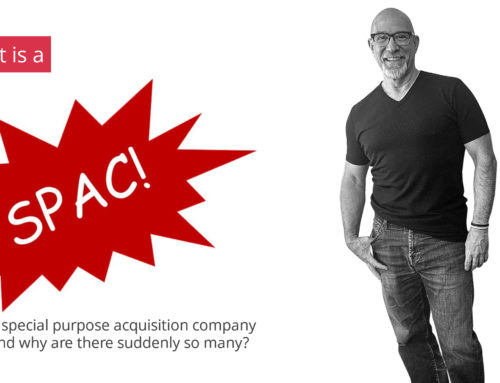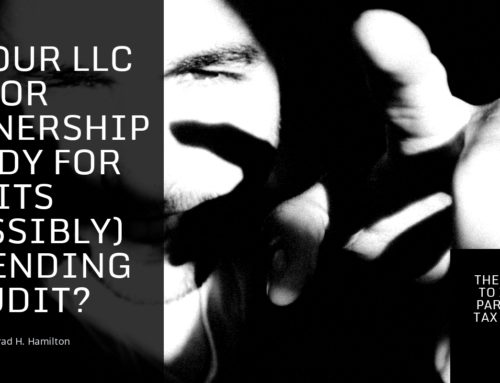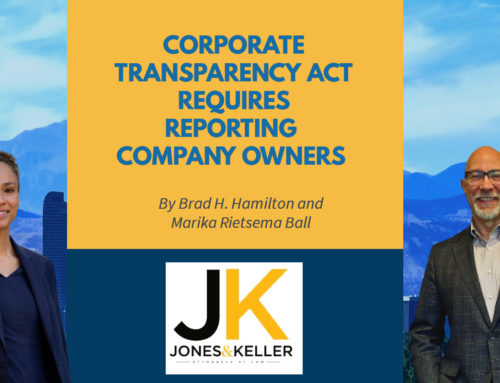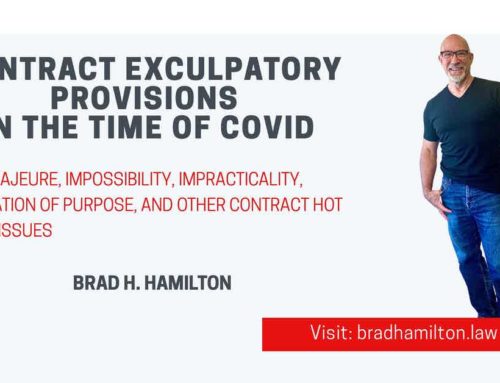SEC requirements on SPACs are ramping up. The last time they did so, blank-check companies languished. How will greater scrutiny this time round impact the momentum of SPACs in play and in the planning stages?
By Brad H. Hamilton, April 20, 2021
The surge in today’s market darling special-purpose acquisition companies (SPACs) has the SEC taking notice. On April 8, the SEC issued a public statement outlining a myriad of concerns including risks from fees, conflicts, and sponsor compensation. “With the unprecedented surge has come unprecedented scrutiny, and new issues with both standard and innovative SPAC structures keep surfacing,” the statement reads.
SPACs are shell companies that facilitate an initial public offering registered with the SEC in order to use cash to buy someone else’s business. In the last two years, the use of SPACs in the marketplace has exploded. SPACs accounted for almost 40% of all IPOs in 2020, double the rate of 2019 (CITE?). SPACs raised more than $10 billion in IPOs in 2020 alone, eclipsing money raised in traditional IPOs for the first time. 2021 is on pace for about 1,000 SPAC IPOs, based on January and February totals, far more than the projected pace of ordinary IPOs (cite).
For a more comprehensive explanation of SPACs, what they are and how they work, view What is a SPAC? At Brad Explains the Law.
Unprecedented activity has the SEC set to reign in SPACs. The last time they did so, blank-check companies languished. How will greater scrutiny this time round impact the momentum of SPACs in play and in the planning stages?
A Mixed History
SPACs, known then as blank-check companies, fell out of favor in the late 1980’s and early 1990’s when they were the preferred vehicle for penny stock scams. In 1992, the SEC adopted Rule 419, requiring that money raised in a blank check IPO be held in a trust account until the company acquired a target business, giving original investors liquidity. After Rule 419, blank check IPO’s languished and were used infrequently.
In recent years, practitioners and financiers renamed the out-of-favor “blank check” company as a Special Purpose Acquisition Company and added a key feature, a timeline for making an acquisition, usually 18 to 24 months. SPACs unable to acquire a business within that timeframe return investments to the investors who funded the SPAC.
Bust to Boom
SPACs were booming in 2019, 2020 and the first quarter of 2021 because capital, like water, follows the path of least resistance. Traditional IPOs are pricey and take time – 6-months to a year of negotiations with underwriters, investment banks, investors, SEC review and revisions, intense scrutiny of financial statements and business plans, and grueling roadshows to pre-promote the offering. It’s a time commitment and distraction only large companies can really afford. Even after all the preparation, companies may see their IPO share price tank in the offering.
IPOs were not always this complicated. In the 1970s and 80s, financing a company through an IPO was more common, with an average of 300 traditional IPOs per year. In the 1990s IPOs boomed – there were 5,742 IPOs during the Internet and Telecom bubble.
Then Enron ruined it for everyone, the telecom and internet bubbles burst, Congress passed the Sarbanes-Oxley Act, and the cost, time, and expense, both of doing an IPO and maintaining a public company increased dramatically, leading to a drop in public companies. The number of exchange traded companies decreased from more than 7,000 in the mid-90s to only a few thousand in the 2000s being traded on NASDAQ or the New York Stock Exchange (it has since grown to around 6,000 now).
IPOs went from almost 600 per year in the 1990s to about 200 per year from 2000 until recently (CITES?). The size of IPOs has grown – IPOs between $100m and $300m are rare now, but IPOs over $10 billion have increased.
(These figures are somewhat misleading because non-exchange traded companies have increased dramatically. NASDAQ used to be the exchange for startup and growth companies. NASDAQ rule changes a few years ago pushed smaller companies out. Now there are 11,500 smaller companies trading on OTC Markets, double from 2010. In the late 1990s young companies were more than 57% percent of exchange listed companies; it’s around 28 percent today.)
Do SPACs Simplify Going Public?
Traditional IPO’s can be difficult. The pricing is unknown until closing and the market is trying to push that price down for the IPO. Failed or somewhat disastrous IPOs have become more common. Some examples:
- WeWork’s attempted IPO in 2019 failed and was pulled because of intense scrutiny and criticism of its finances and leadership by analysts and media. On March 26, 2021 WeWork announced it would go public via merger with a SPAC.
- UBER suffered a huge stock price drop after its 2019 IPO at $45 per share (30% drop in first month) and has fluctuated frequently, but is around $57 per share on the date of this article.
- Wanda Sports launched its IPO in July 2019 and only raised 50% of its target, and the stock price tanked after the IPO.
- Anheiser-Busch tried to spin off its Asia operations, and had to pull the IPO because of pricing, and eventually conducted the IPO months later.
In comparison to a traditional IPO, a SPAC can be an attractive deal for investors for everyone from hedge funds to individual investors. Normally, a SPAC’s IPO price is $10 per share, and even though it is listed for trading, the price normally stays around $10 until it finds an acquisition, because it only has cash in the bank. The IPO offering is usually common stock with a warrant or fraction of warrant – a warrant gives the holder a right to buy common stock in the future at say $11.50 per share if the IPO was at $10 per share, or be cashed out on a tender offer. Usually, the warrant can be exercised starting about 30-days after the acquisition of a target. A couple of months after the IPO, the warrants may start trading separately.
A fund or insurance company with billions of dollars, can park some money with a SPAC founded by experienced financial people. The investment will earn interest, and the investor can get its money back with interest any time before a target is acquired, and at the time the target is acquired it can get its money back with interest – AND keep the warrants, if they don’t like the acquisition.
When a SPAC team identifies a target, it makes an offer and negotiates deal terms with the target company. The acquisition or merger is called a “de-SPAC transaction,” it’s not a special purpose acquisition company anymore, its a real company with a business, so it “de-SPAC-ed.”
Then the de-SPAC transaction closes, and the result is that a private company is now a public company without have to do an IPO, the founders and shareholders of the private company have some liquidity (eventually, because they will have what’s called a ‘Lock up” agreement that will prevent them from selling shares for a while), and the original investors in the SPAC IPO either (1) have their money back, plus interest, plus warrants so they can buy shares in the future at a fixed price, or (2) have shares in a public company that should have a lot of upside, without the cost and volatility of an IPO.
And of course, the SPAC founders make out very well – they invest hundreds of thousands of dollars to form the SPAC and do its IPO, and that money is at risk. So, they are typically compensated with large stakes in the public shares of the acquired company — often up to 20%.
Compared to a traditional IPO with all its price risk, a de-SPAC transaction is a negotiated merger or acquisition by an already public SPAC, at a fixed, negotiated price,
- and the founders of the target business can get paid some cash in the de-SPAC transaction if they want to sell some shares, which they can’t do in a traditional IPO,
- and because the de-SPAC transaction is a merger/acquisition and not an IPO, the target company can talk about its financial projections to investors, just like you can in a private placement – that helps support the SPAC share price. Projections are very risky in a traditional IPO because the underwriters, and everyone else involved, have a higher risk of liability if the projections aren’t met, and the SEC hammers projections like crazy during the review period.
However, there have been several lawsuits filed recently against SPACs after their de-SPAC transactions. A few examples:
- GigCapital3, Inc. was sued after announcing its de-SPAC acquisition of Lightning eMotors, Ryan v. GigCapital3, Inc. et al, 5:21-cv-00969 (N.D. Cal.).
- Social Capital Holdings Hedosophia Corp. III was sued in an investor class action after announcing its de-SPAC acquisition of Clover Health Investments, Corp. and in other lawsuits against their directors and officers for securities fraud, Kaul v. Clover Health Investments, Corp., et al., 3:21-CV-00101 (M.D. Tenn.).
- VectoIQ Acquisition Corp. was sued over its de-SPAC with Nikola Corp., and again in other lawsuits against their directors and officers for securities fraud, Borteanu, et al. v. Nikola Corp., et al., 20-CV-01797 (D. Ariz.).
- Srock v. MultiPlan Corp. f/k/a Churchill Capital Corp. III et al., 1:21-cv-01640 (S.D.N.Y.).
- Pitman v. Immunovant, Inc. et al., 1:21-cv-00918 (E.D.N.Y.).
Managing a public company is very, very different from managing a private company in many ways. The required financial controls, financial reporting, current reporting of every material event, compliance with all the SEC securities rules and regulations, and exchange rules and regulations are an order of magnitude more and different than what’s required to manage a private company, and they still have to run the business operations.
One benefit of doing a traditional IPO is the intensive education the company’s officers, accountants, and board of directors get while going through the process. By the time they finally go public, the employees are usually ready for the change, which is huge.
When a company is acquired by a SPAC, which is already public, it is suddenly a public company with little or no experience in reporting and compliance, it is going to be a very, very steep curve and difficult process, and mistakes will be made in things like insider trading, conflicts of interest, failure in timely reporting, and they can be very, very expensive, in share price, analyst coverage and reputation, and enforcement costs.
On March 31, 2021, the SEC released two advisory statements on SPACs, which are essentially warning advisories on:
- the immediate set of compliance and disclosure requirements that come with being a public company under SEC, NASDAQ or NYSE regulations and rules, here, and
- the complex financial reporting and governance issues arising from a de-SPAC transaction,
On April 8, 2021 the SEC’s Division of Corporation Finance issued a public statement on SPACs, IPOs and Liability Risk under Securities Laws warning SPAC and de-SPAC target directors and officers of various sources of potential liability and risk, emphasizing that SEC staff is “reviewing [SPAC] filings, seeking clearer disclosure,” and will continue to be vigilant about SPAC and target disclosures, and warning the perceptions are overstated that the de-SPAC method of going public reduces liability risk compared to traditional IPOs.
On April 12, 2021 the SEC released another statement from the Division of Corporation Finance and its Chief Accountant, titled Staff Statement on Accounting and Reporting Considerations for Warrants Issued by [SPACs]. The statement clarified that SPAC warrants with certain common features must be booked as liabilities, rather than equity, which both undermines a common SPAC feature, and will cause many SPAC and de-SPAC targets to restate their financials.
These recent developments have brought the SPAC boom to a screeching pause. If the SPAC boom re-energizes, there will be fewer big companies for SPACs to acquire – too many SPACs and too little inventory – and unsuccessful deals, litigation, and SEC enforcement will are increasing. Like all bubbles, the SPAC boom is destined to burst.





